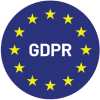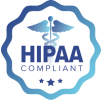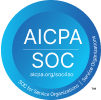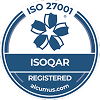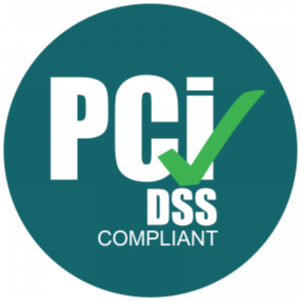Professional development is a critical part of personal and professional growth, and one of the best ways to show your progress is through earning credentials. Whether it’s a degree or a certificate, a diploma or a badge, the more you know… well, the more you grow.
If you’re an organization looking to promote growth, delivering continuing professional development and certification can be the perfect match. Here’s where we pick up our series on trade associations.
Why do trade associations need certification?
The primary reasons are that the association and its members meet legal standards and compliance protocols, conduct their affairs ethically, and build trust with communities or policymakers they lobby and the public.
Interested parties want to know how competition, consumer protections, and fair trade practices impact your strategies. So, certifications are a massive step toward creating transparency that fosters trust and credibility. However, it goes further than this:
- Association membership frequently implies proving skill or talent levels tested by education, experience, or both.
- It applies particularly to professions such as:
- Secretarial services.
- Paramedics
- Legal assistants.
- Various artisan fields like plumbers, electricians, and millworkers.
- Several professions.
In short, trade association reputations rise or fall by the output quality its members provide, and certifications are a guiding yardstick for audiences to rely on.
Some associations apply for tax exemptions attached to qualifying services or grants and government contributions supporting certified activities (e.g., non-profit work for the underprivileged and special situations). Certifications are a must-have to begin the process of applying for such benefits.
Certifications also set standards and establish fairness principles that apply equally to all members. For example, insurance brokerage or financial advisor associations governed by SEC regulations (such as Finra) have a rigid set of graduation markers for their members, alongside refresher courses to retain one’s standing within the association.
They also outline penalties and sanctions for members who fail to meet certification compliance or code of conduct.
The problems with traditional certification and assessment processes for trade associations
One must appreciate that many trade associations are as old as the hills, extending as accepted institutions for decades and even centuries. As the years tick by, stakeholders take their status for granted, allowing certifications to fall into the traditionalism trap.
What’s this? They become outdated and out of touch with modern protocols, needs, and audience demands. In other words, when hard-earned certifications become part of the furniture – decrepit, dusty, or uninviting, third parties lose faith and trust in their implied benefits.
Certifications are much more than a symbol of member or organizational skills, talents, methodologies, and ethics. They mirror the association’s flexibility, guidelines, commitment to remain economically or socially relevant, and ability to lead an industry through volatile environments.
For example, new industry member aspirants or customer communities may become discouraged by the approach to skills assessments and recognition required by the association’s regulations. This becomes particularly apparent when new challenges throw certified member’s skills under the bus.
Other issues include:
- Documentation accessible only through old-school files without the advantage of digital software to agilely record things, adjust content when circumstances require it, and meet urgent time schedules.
- Uncertain assessment processing times, appeals, and application delays creeping into operations, breeding frustration, anger, and impatience.
- Failure to align certifications with the needs of companies in the industry, rushing to compete in fast-changing markets. For example:
- Arranging exams becomes spasmodic.
- Marking papers and declaring results looks disorganized and unreliable.
- Syllabus changes are too slow or lag far behind the times.
How online exams, instant grading, and automation improve efficiency
Trade associations that introduce online exams, instant grading, and AI-enhanced automation make gigantic strides toward streamlining processes. The latter reduces the need for human adjudication, saves on costs, creates constructive and time-sensitive feedback, and motivates participants to upgrade their skills.
Bringing software into the system and integrating it with multiple-choice speed-marking frees educators to focus on new material and keep up with environmental challenges.
Consider also that training becomes more personalized with digital features capable of steering the content to suit participants’ learning pace, advancement, and latent talent. Associations engage members far more convincingly when people see they can learn in ways they prefer without breaking the bank. It opens up options such as:
- Remote learning, in a school setting, or both.
- During or after office hours.
- Using video, audio, and text options.
The benefits of data security and accessibility for certification programs
Savvy association stakeholders have become aware that data accumulated and stored over several years is valuable, provided one can drill down to withdraw the hidden riches. The modern digital era has taught us that vast human teams aren’t a match for machine learning AI algorithms’ agility, seamless processing, and analytic capabilities.
Accessing and assessing the latest software and virtual apps to fill the gaps has become a priority organizational mission for trade associations. They’ve contracted data analytic scientists to cleanse old files of errors, converting them to digital formats primed to deliver association protocols on an adaptable platform that resonates with all interested parties.
Many trade associations’ certification programs must demonstrate robust data security and accessibility, operational efficiency, and compliance to foster trust. Without this, maintaining a solid reputation and competitive advantage for members is not in the cards.
For example:
- Certification programs involving sensitive data must explore encryption modules only available in contemporary software programs. Unless parties pursuing viable certification can see that their confidential details are protected, they’ll unlikely agree to go through the training and apprenticeships or meet other required standards.
- It’s particularly relevant in wealth management, where customer details and actions require strict privacy governed by regulatory compliance. Trade associations that cannot technologically guarantee iron-clad cloud-based protections on all fronts will lose credibility and member trust.
- Many industries cannot escape data privacy regulations (e.g., GDPR, CCPA), risking severe fines and penalties if they don’t comply.
Best practices for upgrading trade association certification frameworks from old-school to AI-enhanced digital formats
The objectives are straightforward when you want to pull your trade association roaring into 2025 from archaic activities where it’s losing members and standing in the community. The following thirteen initiatives are the backbone of trade association best practices:
- Create seamless accessibility to all the certification requirements and tracking procedures so members know where they stand at any point.
- Establish transparency with passwords and usernames, live chats online, and email member support ranging from instant to maximum 24-hour responses.
- Ensure inclusivity of all eager participants, offering equal opportunity to meet certification standards via data and material.
- Adhere to certification standards to resonate credibly with all relevant audiences.
- Design the user experience around speed, accuracy, relevance, and intuitive dashboards.
- Encourage fresh member and community participation by erasing offline non-virtual touchpoints wherever possible.
- Commit to a zero-tolerance policy that never transgresses compliance protocols.
- Install a regulation-centric theme in everything the trade association does for members and targeted communities.
- Streamline software to sustain industry-best output measured against stringent KPIs.
- Make changes when indicated to improve member journeys through the certification process.
- Arrange policy objectives at pre-arranged junctures to inform stakeholders and members, involving them in the planning.
- Conduct surveys to get feedback on all your initiatives digitally online, with carefully worded questions and quizzes.
- Security from end to end must be top-notch.
How Sogolytics can help you streamline and secure your certification program
Sogolytics, a leading customer and employee experience company, has worked with trade associations in their certification activities for years, providing the latest data-analytic resources to sustain or revitalize credibility. Trade associations focused on updating their certifications from every angle rely on our team experience to deliver the surveys and content revamps that never fail to engage your members or communities.
Our excellent customer support delivers the sophisticated analytics essential for insights into certification disconnects when they occur, making a lasting impression on employers or policymakers who rely on the qualifications they promote. Also, our focus on ID security and encrypting essential but sensitive data is second to none. In short, interested audiences involved with trade associations from the survey stages to certifications will see your organization in a new light with the enhancements delivered through Sogolytics.
Whether you want guidance on text, videos, training verticals, or audio platforms, we’re up to speed in removing obstructive touchpoints from your strategies and scaling our input to suit your growing needs.
So, contact us today for a no-nonsense, no-obligation conversation about your trade association needs in the certification and training arena and every other vertical surrounding them.










